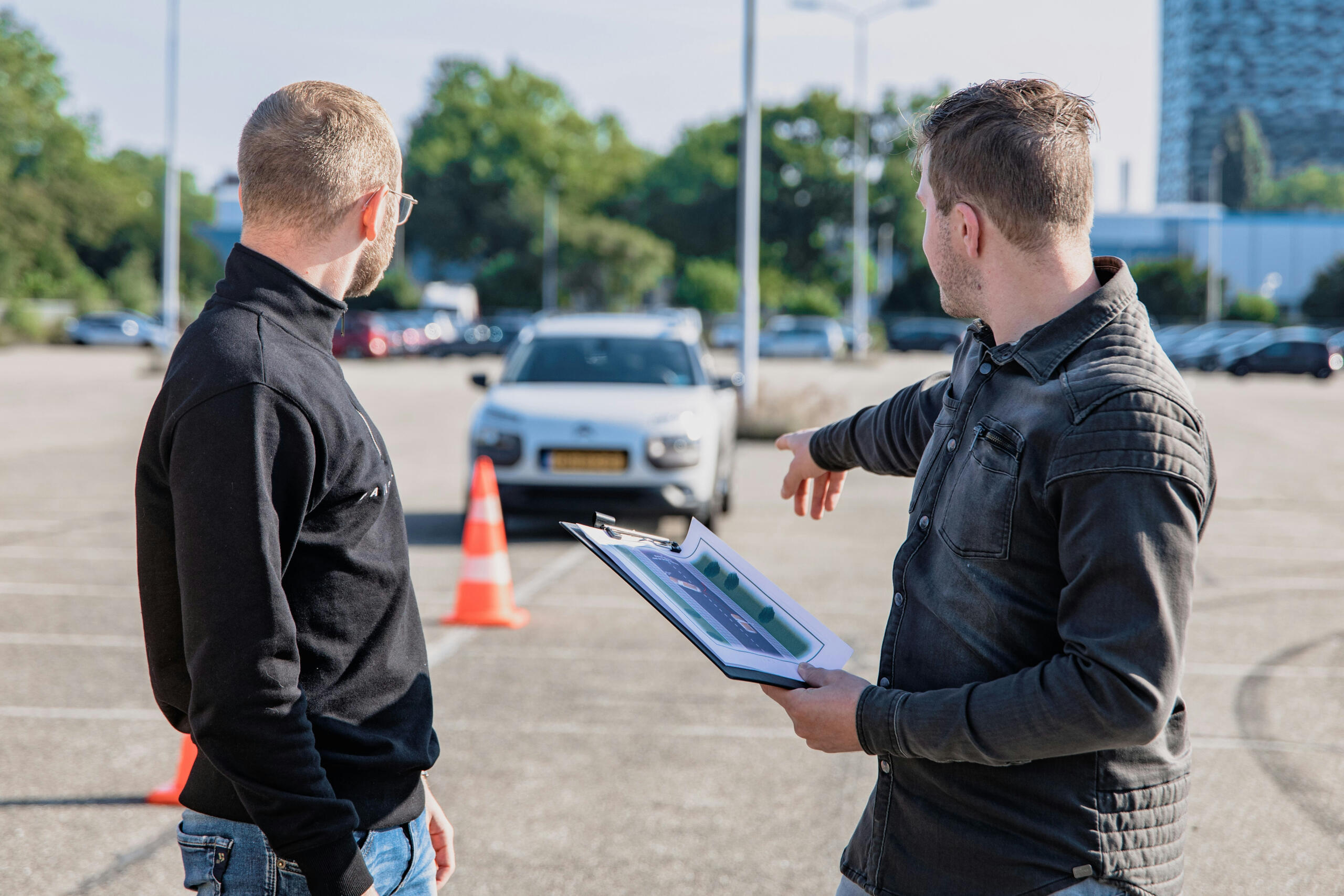Commercial licenses are a class of driver's licenses that have spiked in popularity of late in comparison to non-commercial driver's licenses. This is because they are license classes that provide more incentive than any other, given that they are most commonly used for work purposes. After making your way through the application and training processes, you’ll be able to operate heavy trucks, buses, or specialized vehicles. Since the CDL differs from a regular license that you’re likely already familiar with, you might have guessed that the process behind getting one looks a little different. In order to get your hands on a CDL, you'll need to drive an appropriate vehicle, pass the medical requirements and make it out to the other end of driving school. In this article, we’re going to cover everything from the requirements right up until the point where you have your very own license in your hand.

Understanding CDL Classifications and Requirements
In order to eliminate potential headaches down the line, it's important to do your research before making an application. Thankfully, this is something we can help with. One of the main things you're going to need to work out as you begin the process is what class you’re going to need. The Commercial Driver's License (CDL) system has three main classes that let you operate specific types of vehicles based on their size and weight.

The first option is the Class A CDL, which opens up the most doors when it comes to work. This is because the license class will allow you to operate any combination of vehicles with a weight rating (GCWR) of 26,001 pounds or more and towing vehicles that weigh more than 10,000 pounds.
Being able to drive tractor-trailers, livestock carriers, and flatbeds makes you a lot more valuable to an employer. If you ask anyone who holds this class, you’ll likely hear them refer to it as the "universal" CDL for the amount of driving opportunities it presents.

Then you’ve got the Class B CDL, which will be the go-to option for those looking to drive single vehicles that weigh 26,001 pounds or more or tow vehicles up to 10,000 pounds.
With this license class in your wallet, you’ll be able to legally drive straight trucks, large passenger buses, and dump trucks.
While it offers fewer options than you might get with Class A, it creates great opportunities in local delivery and passenger transport.
When it comes to Class C licenses, they qualify you to drive smaller commercial vehicles that don't fit Class A or B criteria. So, if the vehicle you’ve got parked in your shed didn’t fall into the first two categories, this should serve you. The class serves vehicles that are specifically designed to transport 16 or more passengers or hazardous materials. So, if you currently have a passenger van and a small HAZMAT vehicle that you’re looking to get out on the road, then this is the category for you.
Other requirements you might want to make note of revolve around what you can do once you have the license. If you are between the ages of 18 and 20, you won’t be able to leave your home state with your license. While the requirements change somewhat depending on the state you reside in, you also need to be at least 18 years of age to process an application in the overwhelming majority of the US.
Medical and Physical Requirements
In order to stack the odds in your favor, you’re going to want to make sure you’ve got everything in place and that you meet all of the necessary requirements.
For this, you can make a little to-do list for yourself in your notes to ensure you don’t leave out any steps. The first thing you’ll want to make a note of is that you’re going to need to pass a Department of Transportation (DOT) physical examination in order to show that you are fit to drive a commercial vehicle safely.
This can't be done by just anybody, so make sure to book your appointment with a licensed medical examiner from the Federal Motor Carrier Safety Administration (FMCSA) National Registry.
Don’t worry; the test won’t be anything out of the ordinary. You’ll just be having your blood pressure, pulse rate and a urinalysis checked to screen for conditions like diabetes.
Given that the entire premise of most of these requirements is to ensure that you are fit to drive, you might have guessed that the Vision and Hearing Standards were going to be strict.

Your visual acuity must be at least 20/40 in each eye, with or without correction and will need a horizontal field of vision of at least 70 degrees meridian so that you can see your entire surroundings while behind the wheel.
It’s quite likely that you have never gotten your hearing tested before, so it's more difficult to know if your ears are up to scratch. Your hearing must be good enough to catch a forced whisper from five feet away in your better ear, with or without a hearing aid. Once you’ve met all of the requirements, your medical certificate will become a key part of your commercial driving credentials, so make sure to keep it up to date to continue driving commercial vehicles.

Training and Education Pathways
Now that you’ve met the requirements, you can shift your focus to getting a Commercial license of your own. The Federal Motor Carrier Safety Administration (FMCSA) requires you to have completed your specific Entry-Level Driver Training (ELDT) before you can get your hands on the license. So, you’re going to have to knuckle down and work through a training course from FMCSA's Training Provider Registry.

Among the options available from here, you’ll find private CDL schools and company-sponsored training options. You’ll be glad to hear that you won’t have to carve out all that much time when learning at one of the private schools, which usually run 4-week, 160-hour courses. On the other hand, company-sponsored programs will give you the training you need, with the commitment that you will continue to work with them after completing the process.
The training process you’ll need to complete is split into two parts: theory (classroom) and behind-the-wheel (BTW) instruction. For the theory component of the assessment, you’ll need to achieve a passing grade of at least 80% in an exam assessing your knowledge of the rules of the road. When it comes to the BTW, training you’ll need to show proficiency in specific manoeuvres. You’ll find that in order to cover both sides of the assessment; schools offer programs that run between 150 to 240 hours of total training.
Licensing Process and Documentation
It’s not all plain sailing from there, your commercial license application process needs careful attention to documentation and testing requirements. With your training out of the way, you’ll need to gear up for the assessments. You’ll also need to gather several important documents that prove your identity, residency, and Social Security number.

Required Forms and Documentation
When gathering all of the forms for your application, you’ll need to include your DOT Medical Certification Card and proof that you completed Entry-Level Driver Training from an FMCSA-registered provider.
From here everything will be verified and some checks will be made to ensure that your license isn't suspended or revoked anywhere and that you don't have multiple.Be sure to double-check the requirements, as some states may have further requirements.
Testing Procedures and Skills Assessment

You’ll have three mandatory components to put your training to the test to earn your CDL.
First of all, you’ll have your vehicle inspection test, where you’ll be examined based on your knowledge of critical components and safety issues.
Then there’s the basic controls test, which challenges you to perform some of those maneuvers, such as straight-line backing and offset backing, within specific time limits.
Thankfully you’ll be a well-oiled machine after having gone through your training program. The last hurdle will be an assessment of driving through real traffic conditions, which become your testing ground during the road test where you demonstrate how well you follow traffic laws and practice safe driving.
Getting Your Own License
With an understanding of the requirements and the steps keeping you from your dreams of being a commercial driver, it shouldn’t feel all that far away from becoming a reality. With this article by your side, you’ll have an easier time visualizing and navigating the process between your current position and getting your hands on a commercial driver's license.
After having worked so hard to get your license, you’re going to want to be aware of its validity seeing as the clock will be ticking from the moment it is processed. You’ll be glad to hear that commercial licenses typically stay valid for five years, so while they won't expire anytime soon, it’s important to be mindful of the date.
If you feel like you could use some further guidance preparing for the assessments, you may get value in working alongside an experienced driving instructor from Superprof. The one-on-one learning offered by the tutors on the platform will give you a tailored approach to preparing for your CDL. You may also consider private driving lessons near me for targeted, one-on-one practice with local tutors.















